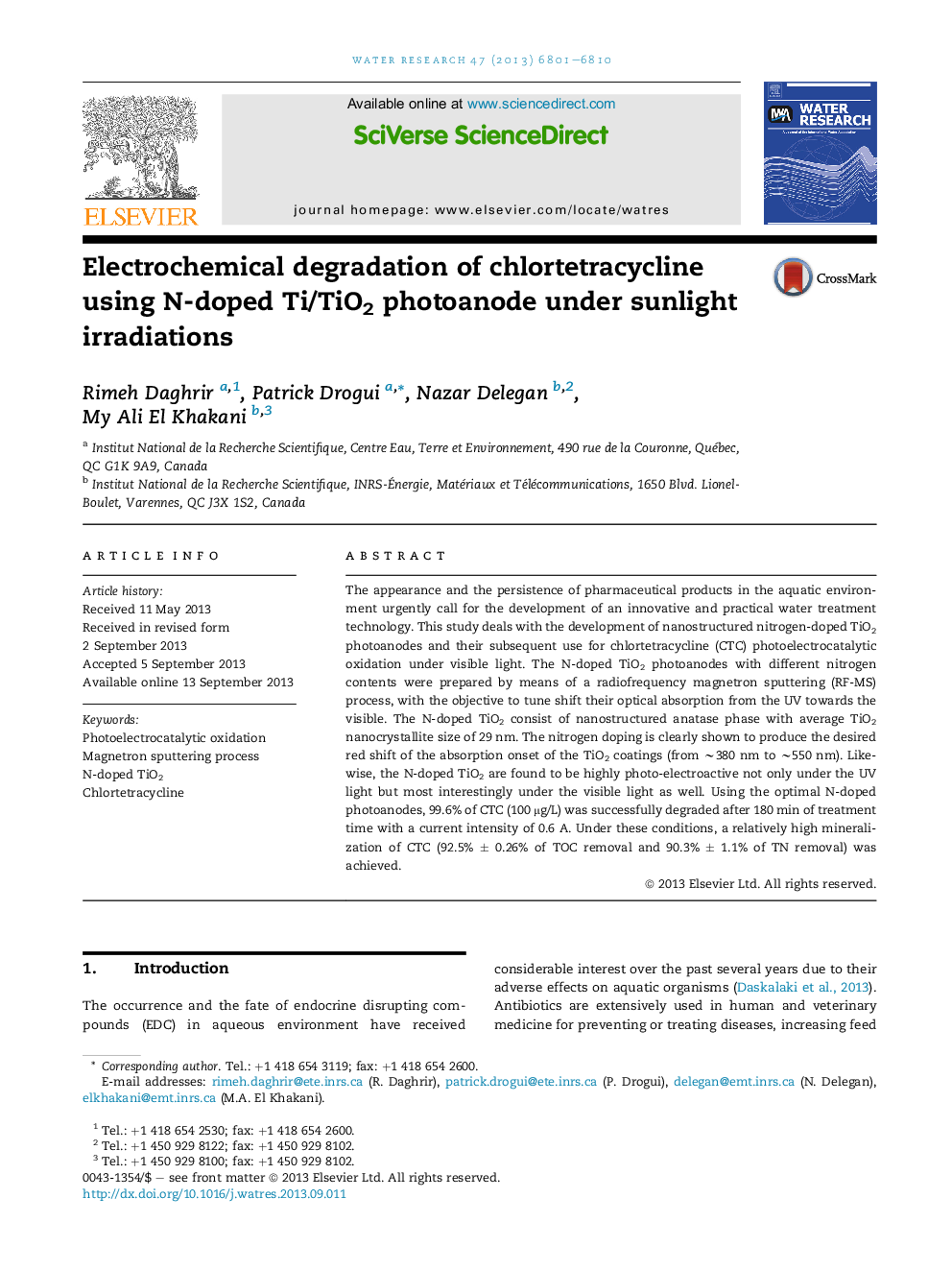| کد مقاله | کد نشریه | سال انتشار | مقاله انگلیسی | نسخه تمام متن |
|---|---|---|---|---|
| 4481930 | 1316840 | 2013 | 10 صفحه PDF | دانلود رایگان |

• A novel nanostructured N-doped TiO2 film was prepared by magnetron sputtering.
• The crystallite size for N-doped TiO2 films was found to 29 nm.
• The nitrogen doping red shift the absorption of the TiO2 coatings from ∼380 nm to ∼550 nm.
• 99.6% of CTC was degraded using 3.4 at.% N-doped TiO2 photoanode.
• 92.5% ± 0.26% of TOC removal and 90.3% ± 1.1% of TN removal were achieved.
The appearance and the persistence of pharmaceutical products in the aquatic environment urgently call for the development of an innovative and practical water treatment technology. This study deals with the development of nanostructured nitrogen-doped TiO2 photoanodes and their subsequent use for chlortetracycline (CTC) photoelectrocatalytic oxidation under visible light. The N-doped TiO2 photoanodes with different nitrogen contents were prepared by means of a radiofrequency magnetron sputtering (RF-MS) process, with the objective to tune shift their optical absorption from the UV towards the visible. The N-doped TiO2 consist of nanostructured anatase phase with average TiO2 nanocrystallite size of 29 nm. The nitrogen doping is clearly shown to produce the desired red shift of the absorption onset of the TiO2 coatings (from ∼380 nm to ∼550 nm). Likewise, the N-doped TiO2 are found to be highly photo-electroactive not only under the UV light but most interestingly under the visible light as well. Using the optimal N-doped photoanodes, 99.6% of CTC (100 μg/L) was successfully degraded after 180 min of treatment time with a current intensity of 0.6 A. Under these conditions, a relatively high mineralization of CTC (92.5% ± 0.26% of TOC removal and 90.3% ± 1.1% of TN removal) was achieved.
Figure optionsDownload high-quality image (196 K)Download as PowerPoint slide
Journal: Water Research - Volume 47, Issue 17, 1 November 2013, Pages 6801–6810